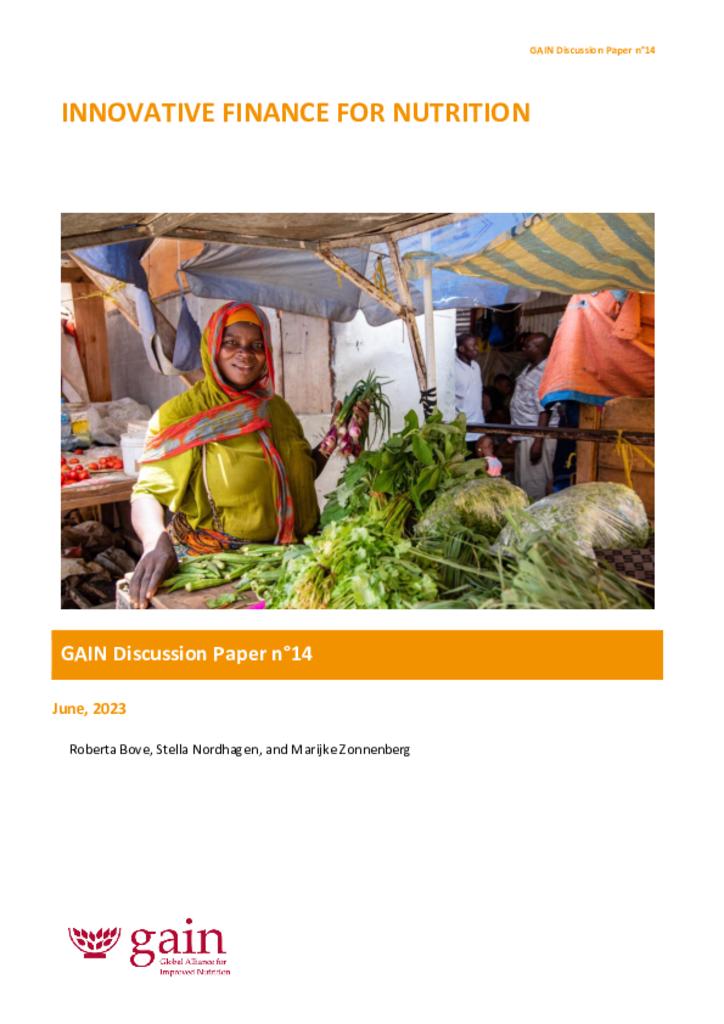Malnutrition is a major public health problem, for which global development assistance current falls far short of needs. As such, it is important to consider non-traditional sources and mechanisms to increase the funding available to support nutrition, particularly in low- and middle-income countries where the burden is highest. This paper aims to do this by reviewing different types of 'innovative finance' and how they can be - and in some cases, have been - applied to improve nutrition.
Innovative finance mechanisms can be grouped into four clusters:
- grants and technical assistance (TA) as part of 'blending' approaches or as a precursor to investment;
- outcome funding, impact bonds, and impact-linked finance;
- various debt and equity instruments; and
- first-loss capital and guarantees.
Among these, grants and TA are the most widely used and well-established mechanisms, including with a food and/or nutrition focus. Debt and (to a lesser degree) equity are also widely used – though not necessarily with a specific focus on nutritious foods. In contrast, approaches that apply impact-related funding within nutrition are only just being developed. First-loss capital has been widely used in other development sectors, but with limited application to date in nutrition, whereas guarantees are less widely used and have not yet been applied within nutrition. Examples of innovative approaches include the Good Food Innovation Fund (Rockefeller Foundation and Intellecap Advisory Services), the Nutritious Foods Financing Facility (GAIN), and Save the Children and Power of Nutrition’s results-based financing approaches.
However, all these mechanisms have potential for further application within nutrition. In particular, impact-related funding could be applied widely, including to non-market-based approaches, and guarantee approaches (successful in other sectors) could be tested with a focus on nutritious food value chains. Developing and deploying any of these approaches will require new partnerships between the nutrition and finance sectors as well as careful documentation and sharing of insights and lessons learned from their initial, exploratory applications.
